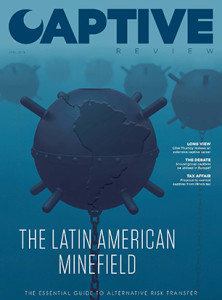With the perceived wisdom being that the largest companies in Europe and North America already have their captives in place, the industry is increasingly looking at the emerging regions and how best to serve their risk management needs.
Corporations in Latin America and Asia are growing quickly and, as they do, are examining how they purchase insurance and the self-insurance options available to them.
In Latin America, however, this appetite can face a number of obstacles both on the side of the risk managers and the service provider – captive managers, carriers, lawyers and even the domiciles themselves.
All this is discussed in detail in our cover feature (p20), although one of the most interesting suggestions was the need for a dedicated captive insurance association for the Latin American region.
Gabriel Holschneider, CEO of the Rainmaker Group, told Captive Review he felt an active association was necessary to spread the word while the idea received support from a number of other stakeholders in the region.
Having attended the CICA conference in Orlando, Florida in March and organising the European Captive Forum in partnership with the European Captive Insurance and Reinsurance Owners Association (ECIROA) last year, it is evident an effective association can have a big pull and an impact on educating its members and outside stakeholders.
In Asia, the two-year-old Pan-Asia Risk & Insurance Management Association (PARIMA) has had a positive effect in bringing together the region’s risk management community to share best practice and a captive association in the east would also be welcome.
The key to success, however, is surely in an association driven by its members – the risk managers, captive owners and prospective captive owners.
ECIROA was established by a large group of influential captive owners concerned at the prospect Solvency II having a disproportionate impact on captives and, as a result, its agenda and lobbying efforts have been strictly dictated by the owners themselves.
Any association with a disproportionate influence from service providers risks not gaining the full trust of its members.
It is also true, as discussed within the cover feature, that one of the primary obstacles to forming a captive in the region is a lack of knowledge and information on the concept.
If those risk and insurance managers who have been down the captive route were able to share their experiences first hand and directly with a regional group then one of the major hurdles may be cleared.







